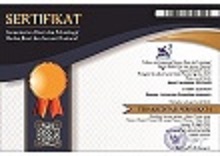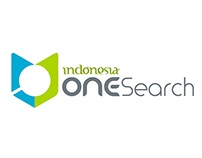WATERFRONT CULTURE SEBAGAI ATRAKSI WISATA TEPIAN AIR
Abstract
Abstract: This research is motivated by the lack of reference regarding waterfront culture for students and practitioners that have an impact on education. Aims of this paper is to explore the reference source for waterfront culture as a waterfront tourist attraction. Researchers use various libraries and some empirical facts related to waterfront culture as data. Analysis of content from various literatures then formulated the element which is the fundamental basis of tourist interest in waterfront tourism is the existence of a waterfront culture in the region.
Keywords: Waterfront, Culture, Attraction
Abstrak: Penelitin ini dilatarbelakangi minimnya refrensi mengenai waterfront culture bagi mahasiswa dan praktisi yang berdampak kepada pendidikan. Untuk itu tulisan ini bertujuan menggali kembali sumber refrensi mengenai waterfront culture sebagai atraksi wisata tepian air. Penelitin menggunkan berbagai pustaka dan beberapa fakta empiri terkait waterfront culture yang ada sebagai data. Analisis konten dari bebagai literatur maka dirumuskan elemen yang menjadi landasan fundamental ketertarikan wisatawan terhadap wisata tepian air adalah keberadaan budaya tepi air (waterfront culture) pada kawasan tersebut.
Kata Kunci: Tepian air, Budaya, Atraksi
Full Text:
PDFReferences
Adamietz A, J. (2012): Urban tourism and waterfronts : Exploring the case of the Auckland waterfront development, Auckland University of Technology.
Ahmad, A. M. (2000): Khartoum blues: the “deplanning” and decline of a capital city, Habitat International, 3.
Akköse, A. C. (2007): The Analysis of Istinye Shipyard Area Within The Context of Redevelopment of Urban Waterfront Areas, Istanbul Technical University.
Ardhan, T., Ariastita, G., Perencanaan, J., dan Teknik, F. (2014): Arahan Pengembangan Kota Palembang Sebagai Kota Pusaka, 3(2).
Babalis, D., dan Townshend, T. G. (2018): Urban waterfronts and cultural heritage: New Perspectives and Opportunities, Italy: Altraline edizioni.
Bappeda (2013): Rencana Penatan Kota Pusaka Banjarmasin, Banjarmasin: Bapedda Kota Banjarmasin.
Breen, A., dan Rigby, D. (1994): Waterfronts ; Cities Reclaim Their Edge, new york: Mcgraw-hills.
Bunce, S., dan Desfor, G. (2007): Introduction to “‘Political ecologies of urban water- front transformations,’” cities.
Campo, D. (2002): Brooklyn’s vernacular waterfront, Journal of Urban Design, 7.
Carpenter, philip L. (1975): Plants in The Landscape, san fransisco: W.H Foreman & Company.
Cervantes, O., Espejel, I., Arellano, E., dan Delhumeau, S. (2008a): Users’ perception as a tool to improve urban beach planning, Environmental Managemen, 42, 249–264, diambil dari https://link.springer.com/article/10.1007%2Fs00267-008-9104-8.
Cervantes, O., Espejel, I., Arellano, E., dan Delhumeau, S. (2008b): Users’ perception as a tool to improve urban beach planning, Environmental Management, 42, 249–264.
Chang, T. C., dan Huang, S. (2011): Reclaiming the city: waterfront development in Singapore, Urban Studies, 48.
Chen, M., Ko, Y., dan Lee, L. (2018): The Relation Between Urban Riverbank Reconstruction and Tourism Attractiveness Shaping- A Case Study of Love River in Kaohsiung , Taiwan and carried out research in five major dimensions including existing resources , tourism activities , food and, (May), 353–360.
Cheung, D. M., dan Tang, B. (2015): Social order , leisure , or tourist attraction ? The changing planning missions for waterfront space in Hong Kong, Habitat International, 47, 231–240, https://doi.org/10.1016/j.habitatint.2015.01.006.
dewi P, intan (2017): Kajian konsep pengembangan waterfront berbasis desain ekologis di cibinong raya, Bogor: Institut pertanian bogor.
Dong, L. (2004): Waterfront Development : A Case Study of Dalian , China by, University of Waterloo.
Follmann, A. (2015): Urban mega-projects for a “world-class” riverfront e the interplay of informality, flexibility and exceptionality along the Yamuna in Delhi, India, Habitat International, 45.
Fusco Girard, L. (2012): The Urban Future. In Bollettino del Dipartimento di Conservazione dei beni Architettonici ed Ambientali (In Italian); Università degli Studi di Napoli Federico II: Napoli, Italy, 12.
Gençtürk, İ. Z. (2006): Design of Water Features in Squares: A Case Study on Sultanahmet and Beyazıt Squares., Istanbul Technical University.
Gordon, D. L. A. (1996): Planning, design and managing change in urban waterfront redevelopment. The Town Planning Review, The town Planning review, 3.
Gordon, D. L. A. (1997): Financing urban waterfront redevelopment, Journal of the American Planning Association, 63.
Gotham, K. . (2002): Marketing Mardi Gras: Commodification, Spectacle and the Political Economy of Tourism in New Orleans, Urban Studies, 39 (10), 1735–1756.
Gravagnuolo, A., dan Angrisano, M. (2013): Assessment of Urban Attractiveness of Port Cities in, 3906–3925, https://doi.org/10.3390/su5093906.
Guo, H. (1998): Research on landscape designing of urban waterfronts., Middle China Architecture, 3, 9–12.
Hein, C. (2011): Port Cities: Dynamic Landscapes and Global Networks., Routledge.
Hussein, M. M. F. (2015): Urban Regeneration and the Transformation of the Urban Waterfront A Case Study of Liverpool Waterfront Regeneration, University of Nottingham.
Jensen, O. B. (2007): Culture stories: understanding cultural urban branding. , 6(3), 211e236., Planning Theory, 6.
Jones, A. (2009): Urban Waterfronts - Learning from legacies: lessons from the past pointers for the future By Dr Andrew Jones, 1–16.
Joseph, M., Wang, F., dan Wang, L. (2014): GIS-based assessment of urban environmental quality in Port-au-Prince, Haiti., Habitat International, 41, 33–40, https://doi.org/http://dx.doi.org/10.1016%2Fj.habitatint.2013.06.009.
Keating, D., Krumholz, N., dan Wieland, A. M. (2005): Cleveland’s lakefront: its development and planning, Journal of Planning History, 4.
Kusler, J. A., dan Kentula, M. E. (1990): wetland creation and restoration : the status of science, USA: Island Press.
Kusliansjah, K., dan Suriansyah, Y. (2017): Model Konseptual Arsitektur Kota Tepi Air Kalimantan, Bandung: LPPM Universitas Katolik Parahyangan.
Lefebvre H (2003): The Urban Revolution, Minneapolis, MN: University of Minnesota Press.
Lynch, K. (1979): The image of the city, Cambridge: MIT press.
Masrul, W. (2007): Perancangan kawasan waterfront dumai sebagai pengembangan kawasan perdagangan dan wisata [tesis], Bandung: Institut teknologi bandung.
Mentayani, I., dan Prayitno, B. (2011): Potret Life Style Masyarakat di Kota Banjarmasin, 1–6.
Mireri, C., Atekyereza, P., Kyessi, A., dan Mushi, N. (2007): Environmental risks of urban agriculture in the Lake Victoria drainage basin: a case of Kisumu mu- nicipality, Kenya., Habitat International, 31(3e4), 375–386.
Nijkamp, P., dan Kourtit, K. (2012): NDSM: Facebook 4 Urban Facelift, The Netherlands.
Norberg, S. (1985): The Concept of Dwelling, new york: Rizolli.
Önen, M. (2007): Examinatıon Rivers’ Recreational Potantial As An Urban Coastal Space: Case Study, Eskişehır Porsuk Creek and İstanbul Kurbağalıdere, Istanbul Technical University.
Papayannis, T., dan Pritchard, D. (2008): Culture and Wetlands—Ramsar Guidance Document. :, Gland: Gland.
Permana, A. S., dan Astuti, W. (2017): Waterfront Development Concepts in Indonesia from the Perspective of Urban Planning and Environmental Sustainability Fundamental Concepts of Sustainable Cities and, 4(3), 146–155, https://doi.org/10.11113/ijbes.v4.n3.207.
Prayitno, B. (2017): Sustainable Resilience of Vulnerable Urban Kampong Fisherman Settlement in Dadap , Indonesia, Habitechno International Seminar, (Ecoregion As a Verb of Settlement Technology and Develpoment), 1–11.
Rapoport, A. (1969): House form and Culture, Englewood Cliffs, USA: Prentice-Hall, Inc.
Ravetz, Girard, F. L., dan Bornstein L (2012): “A research and policy development agenda: fostering creative, equitable, and sustainable port cities”., In Bollettino del Dipartimento di Conservazione dei Beni Architettonici ed Ambientali, 12, Napoli.
Romondt, van (1951): Peninggalan Purbakala di Gunung Penanggungan, jakarta: Dinas purbakala RI.
Sairinen, R., dan Kumpulainen, S. (2006): Assessing social impacts in urban waterfront regeneration, 26, 120–135, https://doi.org/10.1016/j.eiar.2005.05.003.
Salim, P., dan Yuni (1994): Kamus Bahasa Indonesia Kontemporer, jakarta: Modern English Pers.
Salura, P. (2004): Arsitektur dalam bingkai kebudayaan, (Foris, Ed.), bandung.
Schubert D (2011): Seaport Cities. In Port Cities: Dynamic Landscapes and Global Networks, Routledge.
Seattle Department of Planning and Design. Waterfronts Open Spaces and Interfaces of Edge Environments. (2012): diambil dari http://depts.washington.edu/open2100/pdf/2_OpenSpaceTypes/Open_Space_ Types/ wat%0Aerfront.pdf.
Serageldin, I. (1996): Sustainability and the Wealth of Nations Washington, united kingdom: The World Bank.
Steinberg, F. (2007): Jakarta : Environmental problems and sustainability, Habitt Inhabitat, 31, https://doi.org/10.1016/j.habitatint.2007.06.002.
Stopp, H., dan Strangfeld, P. (2010): Floating houses - Chances and problems, WIT Transactions on Ecology and the Environment, 128, 221–233, https://doi.org/10.2495/ARC100191.
Syala, N., Latip, A., Shamsudin, S., dan Shahir, M. (2012): Functional Dimension at “ Kuala Lumpur Waterfront ,” 49, 147–155, https://doi.org/10.1016/j.sbspro.2012.07.013.
Syala AL, N. (2011): Contextual integration in waterfront development, University of Nottingham.
Timur, U. P. (2013): Urban Waterfront Regenerations, Intech, (Advance in Landscape Architecture), 169–205.
Un-habitat (2013): State of the World’s Cities Report 2012/2013: Prosperity of Cities, Kenya.
UNESCO (2013): Nafas baru kota bersejarah.
Wreen, D. (1983): Urban water front development, Washington.D: The Urban Land Institute.
Wu, Y., dan Gao, J. (2002): A discussion of design models of waterfront spatial morphology in urban centre., planners, 18(12), 21–25.
Yang, D. (2006): Waterfronts : Spatial composition and cultural use, University College London.
Yassin, A. B., Eves, A. C., dan McDonagh, J. (2010): An Evolution of Waterfront Development in Malaysia. pp. 1-17., 16th Pacific Rim Real Estate Society Conference Wellington, 1–17, Lyncoln University.
Yodsurang, P., dan Yasufumi, U. (2016): A Traditional Community in the Chao Phraya River Basin II : Influence of Water Circulation on the Traditional Living Culture according to the Settlement Pattern, 8(1), 112–125, https://doi.org/10.5539/ach.v8n1p112.
zhang, L. (2002): An evaluation an urban riverfront park, Riverfront park, Spokane, Washington experience and lessons for designer, united state: Washington State University.
Zhang, L. (2002): An Evaluation of an Urban Riverfront Park.
DOI: https://doi.org/10.17509/jaz.v2i2.14168
Refbacks
- There are currently no refbacks.
Copyright (c) 2019 Jurnal Arsitektur ZONASI

This work is licensed under a Creative Commons Attribution-ShareAlike 4.0 International License.





